Artist:
Gabriella Costa, Alberto Nones, Matteo Mencarelli
Title:
Marco Anzoletti: Golden Nothingness (Complete Unpublished Art Songs for Soprano and Piano - World Premiere Recording)
Year Of Release:
2024
Label:
Da Vinci Classics
Genre:
Classical
Quality:
FLAC (tracks)
Total Time: 51:48
Total Size: 214 MB
WebSite:
Album Preview
Tracklist:1. Gabriella Costa & Alberto Nones – Il nulla d'oro in F Major (01:57)
2. Gabriella Costa & Alberto Nones – Tre variazioni sopra il tema d'un madrigale per una sola voce in A-Flat Major: I. Variazione. Andante (02:18)
3. Gabriella Costa & Alberto Nones – Tre variazioni sopra il tema d'un madrigale per una sola voce in A-Flat Major: II. Variazione. Largo (02:03)
4. Tre variazioni sopra il tema d'un madrigale per una sola voce in A-Flat Major: III. Variazione. Vivacissimo (01:09)
5. Gabriella Costa & Alberto Nones – Lento in C Major (03:19)
6. Gabriella Costa & Alberto Nones – Barcarola in G Minor (05:39)
7. Gabriella Costa & Alberto Nones – Preghiera di maggio in B-Flat Major (04:14)
8. Gabriella Costa & Alberto Nones – L'Ora in B-Flat Minor (03:13)
9. Gabriella Costa & Alberto Nones – Bacio Morto in A-Flat Minor (03:09)
10. Gabriella Costa & Alberto Nones – Tutti quei morsi in E-Flat Major (03:08)
11. Gabriella Costa & Alberto Nones – Quando Amor... in E Major (04:20)
12. Gabriella Costa & Alberto Nones – Vere Novo in D Major (01:23)
13. Gabriella Costa & Alberto Nones – La lavandaia di San Giovanni in F-Sharp Major (01:51)
14. Romanza in F Minor (02:14)
15. Gabriella Costa & Alberto Nones – O piccola Maria in E Major (01:41)
16. Gabriella Costa & Alberto Nones – Com'è arzillo stamattina in D Major (03:12)
17. Gabriella Costa & Alberto Nones – L'Allodola in D Major (01:47)
18. Gabriella Costa & Alberto Nones – L'esule slava in E Minor (02:46)
19. Canti d'Amore: No. 1 in E Minor, La Rosa e gli Amanti (02:40)
20. Canti d'Amore: No. 2 in E-Flat Major, Sogno dell’Alba (02:57)
21. Matteo Mencarelli – Canti d'Amore: No. 3 in G-Flat Major, Tutto ritorna (02:10)
Marco Anzoletti was born in Trento on June 4, 1867, into a family deeply entrenched in music and culture. Marco’s father, Luigi, played the cello; his two uncles, Giuseppe (violinist, conductor and composer) and Francesco (pianist, organist and composer), became the first celebrated musicians of the family. Marco’s sister, Luisa, was a poet and public intellectual engaged on various fronts, encompassing nationalist and irredentist causes, as well as advocating for the emancipation of women from a resolutely Christian standpoint (the title of one of her essays would translate as Faith in the Supernatural and its Impact on the Progress of Human Society). Luisa also delved into the study of the piano under the tutelage of Carlo Chiappani, a renowned music teacher in Trento, becoming a pianist capable of accompanying her brother on his tours. But it was Marco who would transform his passion for music into a lifelong profession. He studied violin at the Royal Conservatory of Milan with Gerolamo De Angelis and also honed his skills in composition, learning from figures such as Gaetano Coronaro, Cesare Dominicetti, and the renowned Amilcare Ponchielli. Soon after completing his studies in Milan and specializing in Vienna, Marco achieved a remarkable feat at a remarkably young age: he assumed the position of a Violin professor at the ”Verdi” Conservatory, succeeding his teacher. Under the strict yet nurturing guidance of Professor Anzoletti, a group of exceptionally skilled instrumentalists, both male and female, thrived. Their unwavering affection for their teacher shows in letters written to him even from the frontlines during the First World War. He taught until 1928, and his pedagogical contributions culminated in didactic works for both violin and viola still employed in conservatories today.
Although Marco’s vibrant creative existence found its pulse in the bustling metropolis of Milan, where his parents and sister soon followed him, his artistic leanings unfolded amidst the picturesque backdrop of Villa Rosa (named after his mother, Rosa Lutterotti), the family home perched in Mesiano, a hamlet situated on the hills to the east of Trento. Marco continued to spend his holidays there and, in 1929, his journey came to an end in Mesiano, just four years after the passing of his sister, who had preceded him into the world by four years.
It is not without reason that I insist on the connection between Marco and Luisa. Many of the lyrical compositions forming the foundation for his vocal chamber music are drawn from the poetic verses of Luisa Anzoletti, and two of the lyrics in this album were written by her. The first I want to mention here is Preghiera di maggio (“May prayer”). Bearing the date of March 15, 1915, this prayer remains particularly relevant in our times: conceived during the tumultuous initial year of the Great War (especially tumultuous in Trentino, which was under Austrian rule), it presents a longing for peace as pressing as ever today. The second song featuring Luisa’s verses is Barcarola (“Barcarole), whose authorship was previously unidentified in existing catalogues but can be found in Vita. Nuove Liriche, published in Bologna by Zanichelli in 1904. I posit that Marco’s artistic choices and interpretation of poetic texts for musical settings consistently found inspiration in Luisa’s work. Her verses found resonance not only with her brother but with several other composers, including Raffaele Bazzigotti, Vincenzo Billi, Mario Ferrari, Giovanni Battista Meiners, Michele Saladino, Alfredo Sangiorgi, and woman composer Elisabetta Oddone Sulli-Rao, underscoring the strong appeal of her poetry in the musical world. In this album, lyrics by another woman poet appear, too: L’Ora (“The Time”) and Bacio Morto (“Dead Kiss”) illuminate the poignant poetry of Ada Negri.
Marco Anzoletti’s artistic acclaim extended the borders of Italy, resonating throughout the Central European region and beyond. Indeed, his reputation as a composer gained international recognition when he sent one of his compositions, the 20 Variations for Violin and Piano on a Theme by Brahms, to none other than Johannes Brahms himself. The composer was so impressed by the young man’s work that he advocated for its publication (Simrock, 1894). It can be seen as no coincidence that one of the compositions for voice and piano by Anzoletti is in the form of theme (rather cryptic, presented in the score as corale profano, secular chorale) and variations, which is actually quite rare in the landscape of Italian (or any other) vocal chamber music. The verses, exploring the then-new art of photography as consisting of both un raggio (a ray) and un veleno (a poison), are by librettist and composer Arrigo Boito. What results, Anzoletti’s Tre variazioni sopra il tema di un madrigale (“Three variations on the theme of a madrigal”), is probably one of the album’s most interesting compositions, revealing remarkable diversity in the musical rendition of each variation. Boito’s verses also contribute to the making of an art song called Lento (“Slow”), where the music navigates through a terrain of strikingly delicate harmonic sensibility.
However, what is most striking is that the entirety of the music contained in this album remains in unpublished form. Despite Anzoletti’s prolific output, which encompasses some 895 scores, only a meager fraction has been unveiled to the public eye. To date, the published works for voice and piano amount to just two entries: an Improvviso (Impromptu) titled Ti ricordi, which appeared in the “Strenna dell’Alto Adige” in 1902, and an irredentist song, set to Luisa’s lyrics, Canto delle terre redente, published in Milan by Monzino without a specific date of publication. As for all the compositions featured in this album, they exist only in their original manuscript form, inscribed in pencil. These manuscripts encompass a range of legibility, with some meticulously transcribed into fair copies and others surviving as faded drafts, often very challenging to decipher. We must be grateful to the Biblioteca Comunale of Trento, which houses the composer’s extensive music library and correspondence, collected upon the composer’s death by the Società Filarmonica of Trento. Had it not been for the diligence of these two institutions, we would not have Marco Anzoletti’s music today.
This recording therefore represents a world premiere showcasing a treasury of hitherto unpublished works, urging, in my opinion, the expeditious publication of the musical scores. One encounters in Marco Anzoletti’s vocal chambers music creations at times an intricate complexity, other times a disarming simplicity, and consistently a pure inspiration, combined with a refinement that belies an underlying passion, but tormented, chastized, like embers beneath the ashes.
These compositions breathe life into verses of the highest order. In Tutti quei morsi (“All those bites”), Anzoletti even dares to set to music verses from Dante’s Divina Commedia. Most likely together with Luisa, who was a Dante conoisseur, he uncovered from Paradise XXVI the fundamental tercets (55-63) in which the poet reaches an arrival point of his transformative journey, transitioning from amor torto, the false love of worldly pursuits, to diritto, the genuine love of the Divine. Anzoletti’s musical interpretation captures the essence of such a relentless and probing quest for charity, forging a connection between the expressive nuances of the late 19th century and unexpected resonances of the Baroque, reminiscent of Bach’s compositions. It is no coincidence that Anzoletti, a distinguished violinist as he was, took an early lead in Italy by presenting an all-Bach concert.
Lofty is also the piece based on verses by Francesco Petrarca, a Quando Amor… (“When Love…”) evoking Mahler’s tonalities. The eminent figure of Giosuè Carducci, who occupied a central role in the Italian cultural milieu of Anzoletti’s times, is prominent here as well. His lyrical creations Vere Novo (“In spring”), La lavandaia di San Giovanni (“The laundress of Saint John”) and O piccola Maria (“O little Mary”), as well as his translation of verses by Klopstock utilized in Romanza in Fa minore (“Romance in F minor”), further enrich Anzoletti’s musical tapestry.
Anzoletti’s choices include literary figures who are lesser-known today. I have discovered that the lyrics of L’esule slava (“Slavic Exile”), previously unattributed to an author, correspond to the poem L’esule della Polonia (dated March 1848, Naples, and included in Canti popolari) by Francesco Dall’Ongaro, an Italian poet and patriot who experienced exile in Europe during the Risorgimento – even today, though, the theme of being forced to leave one’s homeland remains relevant. Luigi Orsini, who was Marco’s colleague at the Milan Conservatory, where he taught Letteratura poetica e drammatica, is the author of L’Allodola (“The Lark” appears in Orsini’s novel with the same title). The Trentino poet Giovanni Prati (about whom Luisa gave a talk on November 11, 1900) assumes an important role in this anthology, presenting his evocative verses in the three Canti d’Amore (Love songs): La Rosa e gli Amanti (“The Rose and the Lovers”), Sogno dell’Alba (“Dream of the Sunrise”), and Tutto ritorna (“Everything comes back”).
Last but not least, Giovanni Bertacchi, one of the extremely few academics who chose to resign from his position (as a professor of Italian literature at the University of Padova) in opposition to fascism, is the author of the lyrics for Il “nulla d’oro”, which translates to “Golden nothingness”. This idea captivated me to the point of providing the inspiration for the album’s title.
This rich set of songs aspires to comprehensiveness as concerns Marco’s songs for soprano. In pursuit of this objective, I have consciously omitted unpublished pieces evidently designed for male vocalists, such as a Serenata indiana which too can be found in the archive, to cite one example. I have chosen to also exclude the piece Canzonetta, clearly written instead for soprano, for a different reason: it is in Venetian dialect, deviating from the Italian language characteristic of all the other pieces contained within this collection; but above all, I have traced it to bear a clear resemblance to Amor ti xe un putelo, a Venetian folk song to be found in the Raccolta di canzonette popolari veneziane: con accompagnamento di pianoforte, published by Ricordi in 1840. I suggest this piece should better be categorized as a transcription by Anzoletti rather than an original composition of his. Finally, I believe that certain other vocal chamber compositions by Anzoletti, like the Ballades, exhibit a character that is different from that of art songs. In my view, these pieces necessitate an independent examination.
The volume of works contained within this collection proves already quite substantial. Successive gems emerge, unveiling the musical prowess of an artist deserving recognition as a distinguished Liederist. Contrary to so many Italian colleagues of his, Anzoletti aimed to go beyond mere melodrama and, aligned with a European perspective of music creation, embraced chamber music. Within that sphere, vocal compositions cannot merely serve as salon romances, and not even as operatic arias; they are expected to reach the most sublime musical and poetic heights. In a letter to Luisa, Marco laments how, in Milan, publishers like Ricordi and Sonzogno only backed their Puccinis and Giordanos. This is probably the strongest reason why Anzoletti’s vocal chamber music has been overlooked.
But perhaps, as the last song on this album suggests, Tutto ritorna – everything does come back. Nearly a century after his passing, there is a palpable opportunity for these compositions to finally resonate with the receptive listeners that Marco must have had in mind while composing. Music, inherently elusive, embodies a unique form of artistry. This is especially true for the realm of good music, an intangible but invaluable commodity that indeed recalls, in a positive way, the nulla d’oro rilegato in argento (“framed-in-silver golden nothingness”) of Bertacchi’s lyrics. Recognizing the wisdom of warnings like those expressed by Debussy’s Monsieur Croche concerning the “melancholic reappraisal of posthumous glory” when “exhumations are carried out by clumsy hands,” we – baritone Matteo Mencarelli, soprano Gabriella Costa, audio engineer Giordano Corsetti, and I – committed to bringing to light this music with utmost care. Marco’s works have triggered in us a deep impression, eliciting a fervent hope to be able to bestow upon this unjustly forgotten music the radiance it deserves.
Under his sister’s guidance, Marco also ventured a little into the realm of poetry – incidentally, speculation arises in me regarding his authorship of the unspecified lyrics for Com’è arzillo stamattina… (“How lively he is this morning…”). He wrote a book of sonnets delineating various famous composers, the last sonnet of which speaks of the enigmatic, inexhaustible nature of La musica ancora ignota (“Music still unknown”, my translation):
A huge choir of spirits proceeds
From a remote power all innovating,
Like lightning that to lightning succeeds
The harmonies of a new art are bursting.
Supreme ringing; a sound that sounds exceeds;
It seems that the Infinite towards time is moving!
Exactly. Let us grant the last words, though, to the literary luminary of the Anzoletti siblings, Luisa. These verses, found in Parla così la musica (“Music speaks thus”, my translation), underscore the way in which the divine art of music was perceived and revered by the Anzolettis, transcending the boundaries of both expression and existence:
Music speaks thus
…
Her voice is at times the groan of death
Other times the cry of life.
…
So that not only tears
May be the source of our most beautiful ideas
And our heart may grasp
The glory of God narrated by the stars.
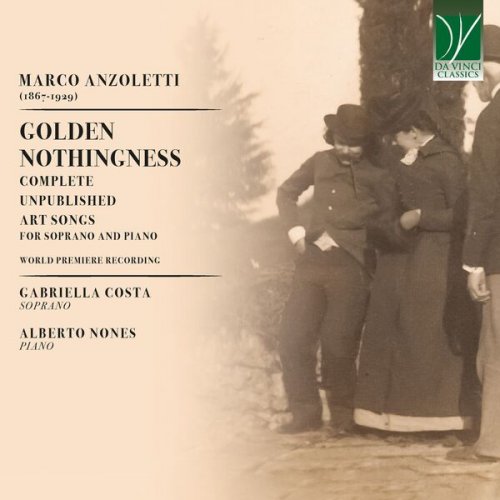


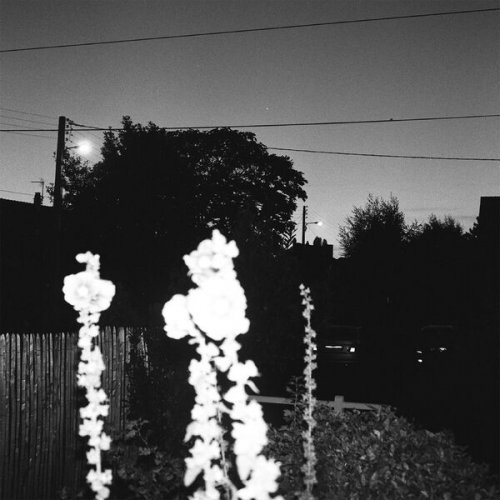
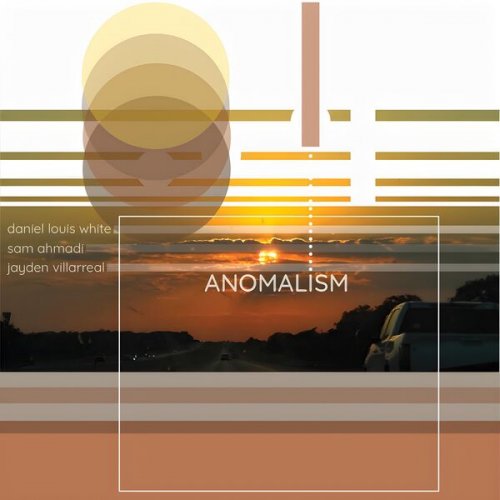

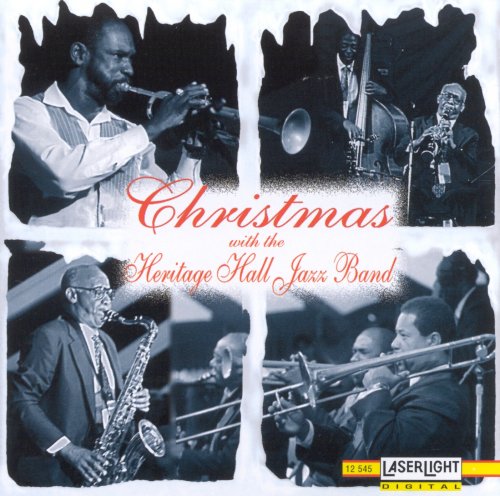
![Black Flower - Ghost Radio (2016) [Hi-Res] Black Flower - Ghost Radio (2016) [Hi-Res]](https://img.israbox.com/img/2025-12/21/9jx4xnhjd3hra5u06rbmghsre.jpg)
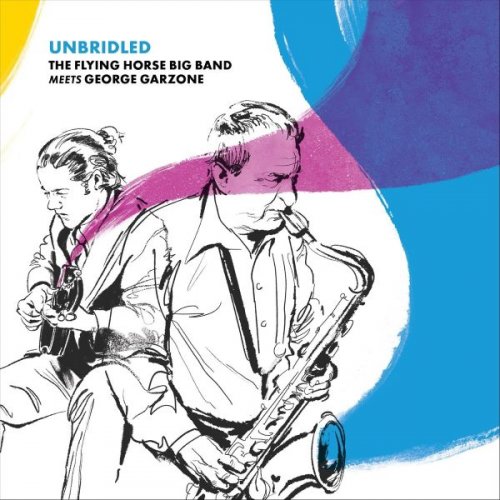
![Enrico Zanisi - Blend Pages (2025) [Hi-Res] Enrico Zanisi - Blend Pages (2025) [Hi-Res]](https://www.dibpic.com/uploads/posts/2022-12/1670308427_enrico-zanisi-blend-pages-2018.jpg)
![Philipp Gropper’s Philm - Sun Ship (2017) [Hi-Res] Philipp Gropper’s Philm - Sun Ship (2017) [Hi-Res]](https://img.israbox.com/img/2025-12/22/lxfeu4bqs3xus6ku842hruzby.jpg)